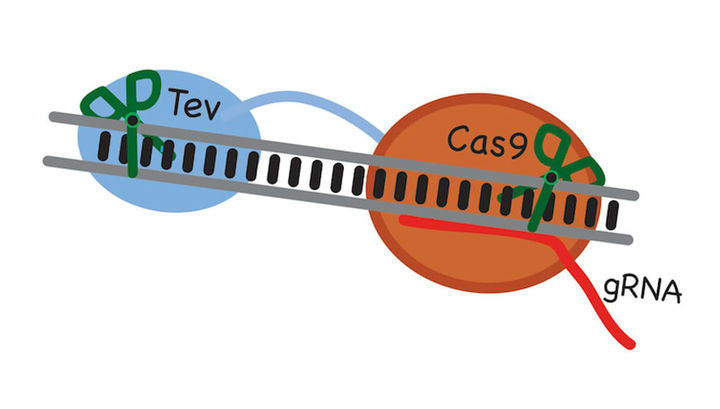The CRISPR method has become even more effective
"Molecular LEGO" will make genome editing technology more useful
Evgenia Efimova, Vesti
CRISPR-Cas9 genome editing technology promises to radically change the process of saving people from various diseases. In particular, the researchers believe that such technology could potentially help in the treatment of muscular dystrophy, HIV and retinal degradation.
CRISPR technology is a kind of way of cutting DNA in certain places using the Cas9 enzyme. Now, experts from Western Ontario University have slightly improved the editing technology by adding a modified enzyme to CRISPR (Scientists use ‘molecular-Lego’ to take the CRISPR gene-editing tool to the next level).
The latter helps to prevent the self-repair of a certain section of DNA (on which work was carried out), otherwise such "work on errors" would have crossed out all the necessary changes that were made. The new tool was nicknamed "molecular LEGO" due to the combination of two enzymes.
Recently, CRISPR technology began to be tested on humans. Experts hope that in the future they will be able to change sections of DNA at will, removing incorrect or unnecessary genes. For example, those that may be the cause of cancer or other serious diseases. But, unfortunately (from the point of view of genomic editing), cells have the ability to fight against "damage" in DNA molecules. Such self-medication can reverse all attempts of geneticists to get rid of unnecessary genes.
The problem with CRISPR is that the technology allows DNA to be incised, but then the repair process brings this incision to its original appearance, says lead author of the study David Edgell (David Edgell). "This means that the regenerating area targeted by CRISPR technology creates a useless cycle. But our improvement of the technique helps to stop the regeneration process," explains the scientist.

The new enzyme I-Tevl in combination with Cas9– an enzyme that cuts DNA, helps to save the situation: where Cas9 makes an incision in only one part of the genome, TevCas9 makes an incision in two places not far from each other, which makes the recovery process more difficult for cells.
In addition, the researchers believe that the TevCas9 complex also reduces the likelihood of undesirable side effects that may occur as a result of the procedure.
A study on improved gene editing technology (Wolfs et al., Biasing genome-editing events towards precise length deletions with an RNA-guided TevCas9 dual nuclease) published in the scientific publication Proceedings of the National Academy of Sciences.
Portal "Eternal youth" http://vechnayamolodost.ru
14.12.2016